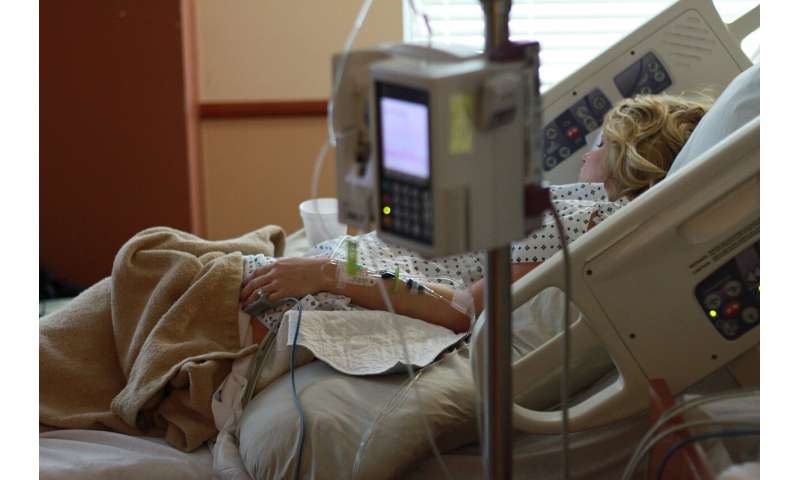
A crisis is silently brewing in hospitals around the world, and it may not be exactly what you think. While the numbers of COVID-19 cases and deaths continue to swell, the very treatments used to battle this deadly disease are triggering life-altering mental health effects.
Patients, already in physical distress, are arriving in intensive care units knowing they have a disease that doctors don’t yet fully understand. Making things worse, they’re isolated and alone. Family and friends who could provide emotional support and advocate for their needs under normal circumstance are kept out of hospitals to avoid spreading the virus further.
The traumatic stress associated with medical treatment, the health care environment and chronic illness can lead to a wide variety of mental health problems. Medical post-traumatic stress disorder, or m-PTSD, as well as depression and anxiety, can worsen patients’ physical health and harm their quality of life.
Medical trauma arises from a complex interaction of risk factors associated with a person’s unique experiences and their perceptions of the events, as well as environmental factors. But unlike other types of trauma, it is a direct result of experiencing medical treatment—the very interventions designed to protect patients’ physical health and their lives. It is because of this context, in part, that medical trauma is often overlooked and misunderstood. After all, the hospital is where you go to heal.
As professors in mental health and counseling who study mental health trauma from medical treatment, we are concerned about the impact isolation is having on COVID-19 patients.
COVID-19’s stress starts before the hospital
While medical trauma can occur for anyone in any type of health care setting, risk factors associated with the COVID-19 pandemic have greatly increased the likelihood that patients will experience adverse mental health effects, in part because of the stress created by living in a pandemic.
Factors such as isolation, fear of catching a deadly virus and a collective, generalized anxiety increase people’s vulnerability for getting sick both physically and emotionally.
During the SARS epidemic that started in 2002, researchers in Canada found that nearly one-third of people who were quarantined struggled with PTSD or depression. Having been exposed to someone diagnosed with SARS, or even knowing someone diagnosed with it, increased the likelihood of PTSD or depression symptoms.
The COVID-19 pandemic has created an environment of chronic uncertainty, fear and despair—emotions that erode mental health, well-being and immune defenses and that can be propagated in part by the social isolation experienced in quarantine.
It is within this context that people are getting sick.
PTSD tied to intensive care
Studies examining PTSD in patients who were treated in the ICU for various medical issues have found rates ranging from 15% to upwards of 27.5%. In a Johns Hopkins study of patients with acute lung injury treated in the ICU, 35% had developed clinical PTSD two years following their release from the hospital.
The most potent risk factors researchers have found are also quite prevalent in the current context of COVID-19 quarantine and treatment. They include experiencing delirium, which is more likely in patients of advanced age who receive sedating medications and are socially isolated; experiencing fear or psychosis while in the ICU; and the length of stay. Research has demonstrated the strongest risk factor for developing PTSD in the ICU to be the duration of sedation.
This list could easily be mistaken for a typical patient during this pandemic, especially given the severe respiratory symptoms requiring sedation, medications, intubation, the use of ventilators and long hospital stays.
A few early studies have started exploring mental health issues related to COVID-19. A review published May 18 looked at dozens of studies involving patients treated for SARS, MERS or COVID-19 and found that after one year, 34% of the SARS and MERS patients had post-traumatic symptoms. The authors also looked for evidence of neuropsychiatric harm, such as impaired thinking, but found little other than short-term delirium. They did find symptoms of depression in 29% of patients and anxiety in 34%.
What can be done about it?
Being hospitalized in the ICU can be disempowering, frightening and disorienting under any circumstances. In the current context of social distancing and isolation brought by COVID-19, patients are at increased risk of experiencing medical trauma without the social supports necessary to help mitigate the effects of ICU treatment.
Using technology to enable patients to video chat with family can help ease some of the loneliness created when quarantined in ICU, but not everyone is able to access such technology. Further, technology simply cannot take the place of in-person connection with others, which leaves the task of comforting patients emotionally to a stretched and often overburdened health care workforce.
Source: Read Full Article
